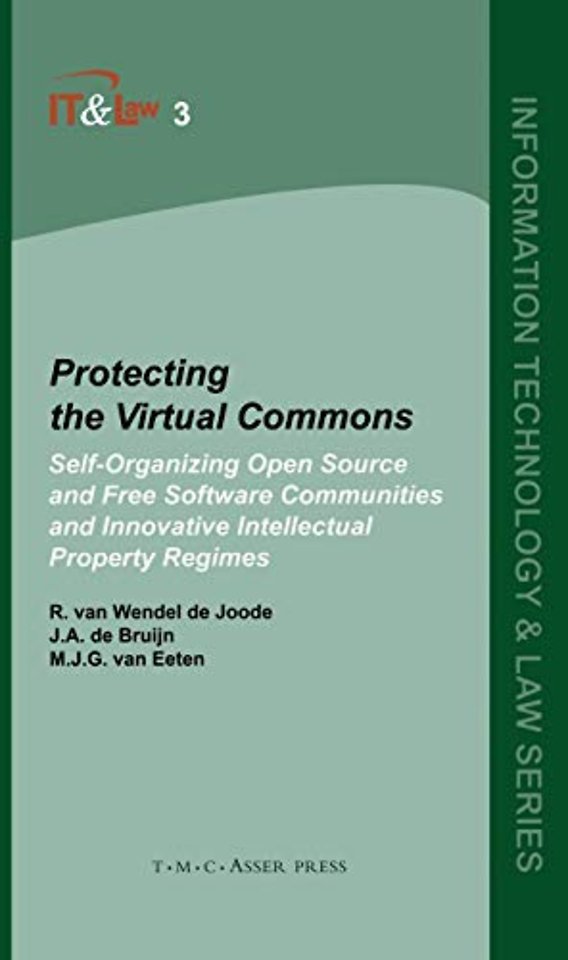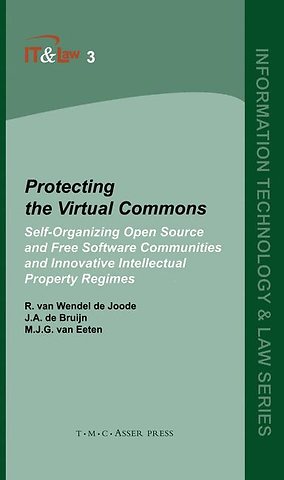Protecting the Virtual Commons
Self-Organizing Open Source and Free Software Communities and Innovative Intellectual Property Regimes
Gebonden Engels 2003 1e druk 9789067041591Samenvatting
Worldwide, governments and businesses are recognizing the added value of open source and free software. Unlike other software, this software is developed and continuously improved by volunteers in communities on the Internet. Some of these communities, like Linux and Apache, connect thousands of volunteers worldwide. The question is how these communities are able to continuously develop innovative software in a world dominated by markets, companies and laws.
Protecting the Virtual Commons informs us about the surprisingly creative solutions that explain the long-lasting stability of these communities. It identifies the threats that the communities are faced with and discusses the amazingly innovative strategies developed to neutralize these threats. The book has been written with a clear focus on intellectual property rights.
In their analysis, the authors provide answers to the following questions: Why have open source and free software communities created so many different licenses to protect their intellectual property? What influence do licenses have on the organization of the communities and their ability to innovate? What are the differences between intellectual property rights on software in Europe and the United States? What are the tensions between the way in which open source and free software communities deal with intellectual property and the way in which companies protect and use intellectual property? What regulatory arrangements can deal with the tensions between the corporate model and the open source and free software development model?
This is Volume 3 in the Information Technology and Law (IT&Law) Series
Specificaties
Lezersrecensies
Inhoudsopgave
Rubrieken
- advisering
- algemeen management
- coaching en trainen
- communicatie en media
- economie
- financieel management
- inkoop en logistiek
- internet en social media
- it-management / ict
- juridisch
- leiderschap
- marketing
- mens en maatschappij
- non-profit
- ondernemen
- organisatiekunde
- personal finance
- personeelsmanagement
- persoonlijke effectiviteit
- projectmanagement
- psychologie
- reclame en verkoop
- strategisch management
- verandermanagement
- werk en loopbaan

